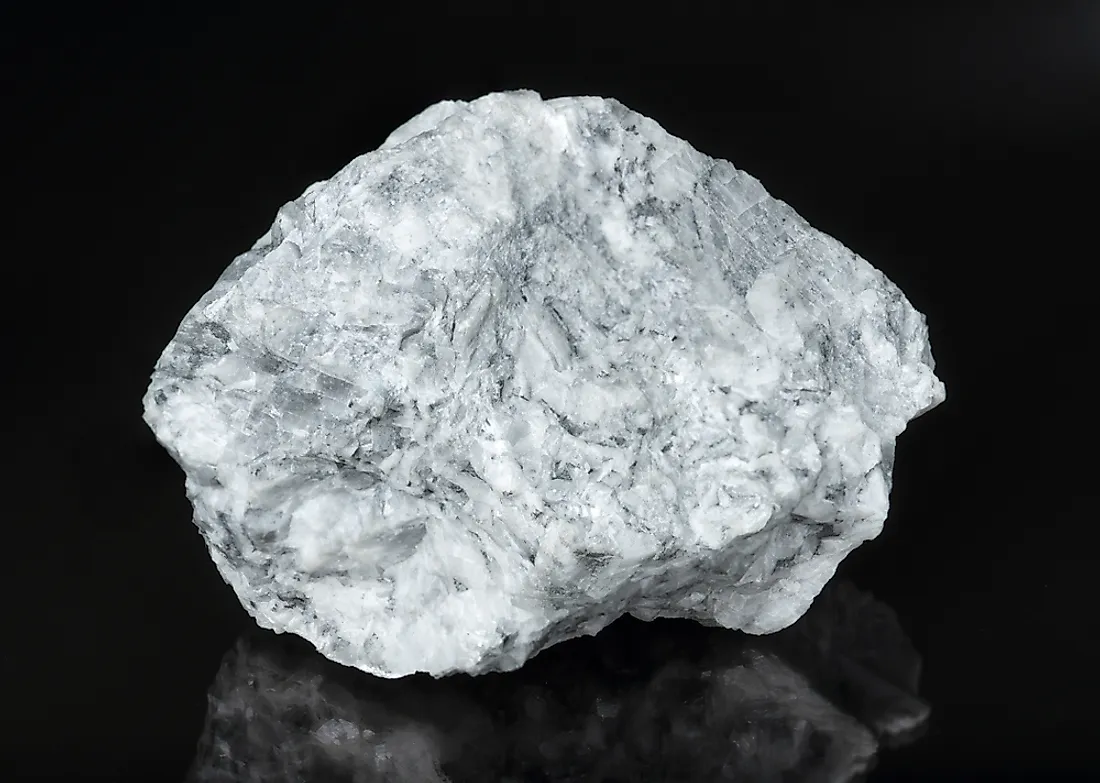10 Countries With The Largest Magnesite Reserves In The World

Magnesite is a mineral composed primarily of magnesium carbonate (MgCO3), but may also contain admixtures of iron, manganese, cobalt, and nickel in extremely small amounts. Magnesite is a very brittle mineral and can be colorless, white, pale yellow, pale brown, pink, or even lilac rose in color depending on the composition of admixtures.
Where Is Magnesite Found?
Magnesite is usually formed through the metamorphism of magnesium-rich or carbonate rocks, or by chemical weathering. Magnesite is found as veins in rocks that are rich in magnesium content, such as serpentinite and ultramafic rock.
Top 5 Countries with the Largest Magnesite Reserves
Russia
Russia ranks first, along with North Korea, as the country with the world's largest total magnesite reserves.
North Korea
North Korea ranks first, along with Russia, in terms of the largest magnesite reserves in the world. The Daeheung Mine in North Korea is considered to be the world’s largest magnesite mine. However, magnesite mines in North Korea have an average operation rate that is less than 30% of capacity due to lack of funding and the deteriorating infrastructure of mining facilities.
China
China has the third largest magnesite reserves in the world. Magnesite is a major source of magnesium in China, and the country has 27 proven deposits of magnesite, which are primarily located in the following provinces: Xinjiang, Liaoning, Shandong, Tibet and Gansu. However, approximately 85.6% of China's magnesite reserves are located in Liaoning.
Brazil
Brazil contains large magnesite reserves, which are located in two Brazilian states: Bahia and Ceara. Deposits in Bahia account for 85% of Brazil's total magnesite reserves, while the remaining 15% are located in Ceara.
Australia
Australia contains the world’s fifth largest magnesite reserves. The mineral is distributed in many parts of the country, including New South Wales, Tasmania, South Australia, Western Australia, and Queensland. The mining of magnesite deposits in Australia occurs through open-cut methods.
Uses of Magnesite
Magnesite has several uses but is primarily used to produce magnesium oxide (MgO), which in turn has many industrial applications. Magnesium oxide is produced by burning magnesite in the presence of charcoal and can be used as a refractory material (resistant to decomposition by heat) in kilns, incinerators, and blast furnaces. Magnesite is also used in flooring materials, where it acts as a binder. The synthetic rubber production process uses magnesite as a filler and catalyst, and the mineral is also used to produce fertilizers and other chemicals that contain magnesium as an important component. The mineral can be used in jewelry-making, as magnesite crystals are polished to form brightly colored beads. Additionally, magnesite can be used as a fire retardant, as well as an ingredient in face powders, disinfectants, and ceramics.
List of 10 Countries with the Largest Magnesite Reserves in the World
| Rank | Country | Magnesite Reserves (1,000 metric tonnes) |
|---|---|---|
| 1 | Russia | 2,300,000 |
| 2 | North Korea | 2,300,000 |
| 3 | China | 1,000,000 |
| 4 | Brazil | 390,000 |
| 5 | Australia | 320,000 |
| 6 | Greece | 280,000 |
| 7 | Turkey | 230,000 |
| 8 | Slovakia | 120,000 |
| 9 | India | 82,000 |
| 10 | Austria | 50,000 |











